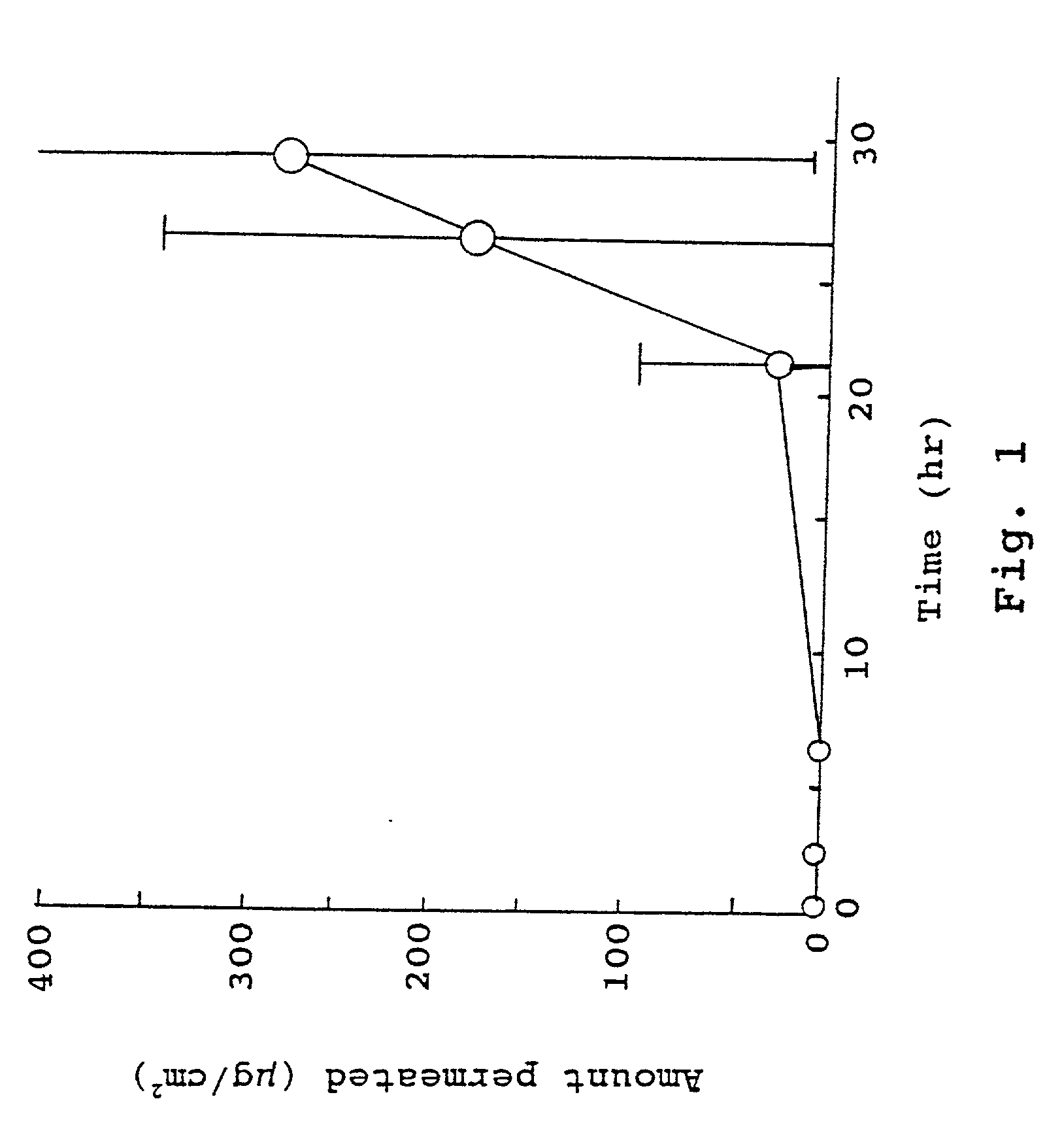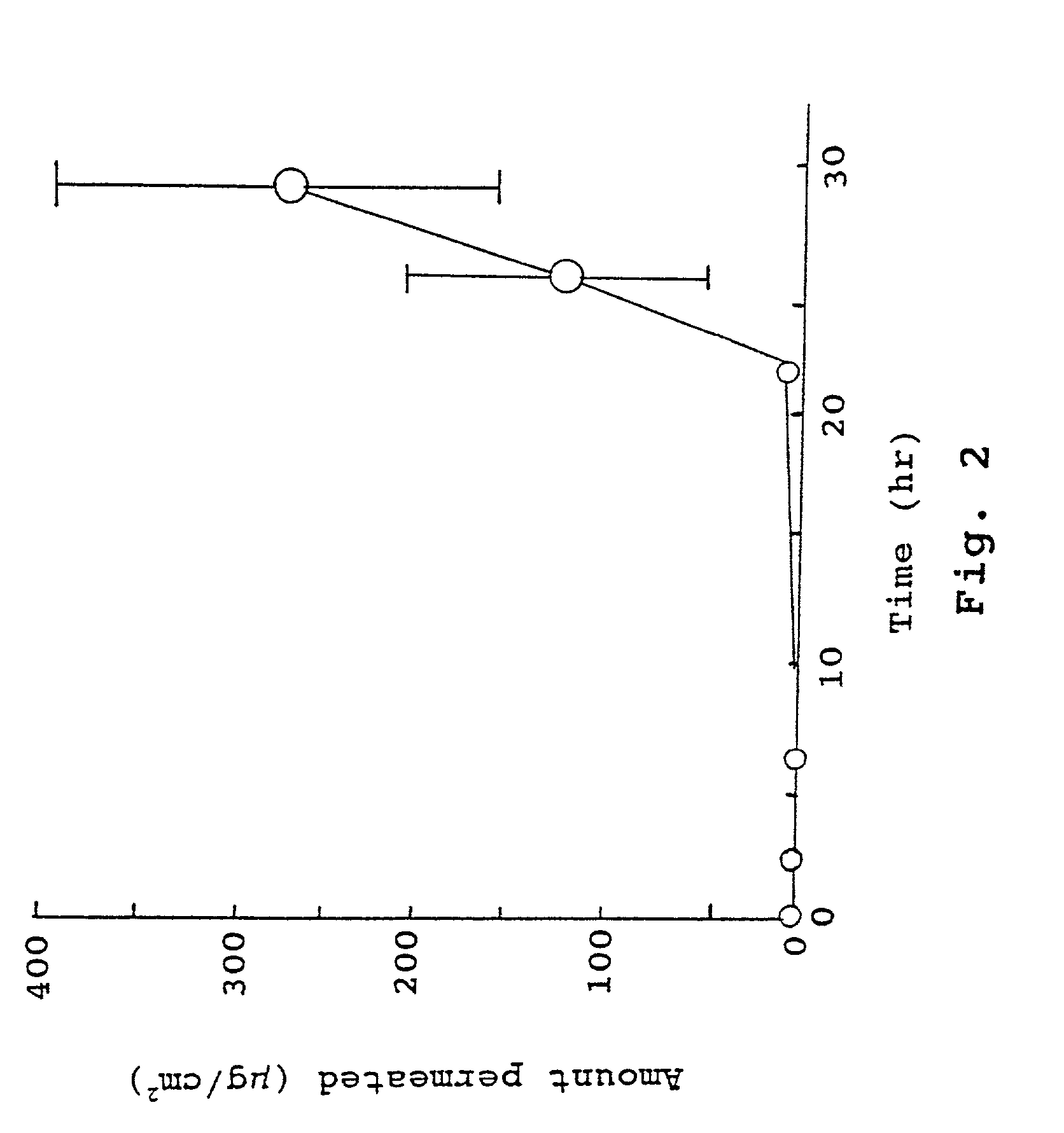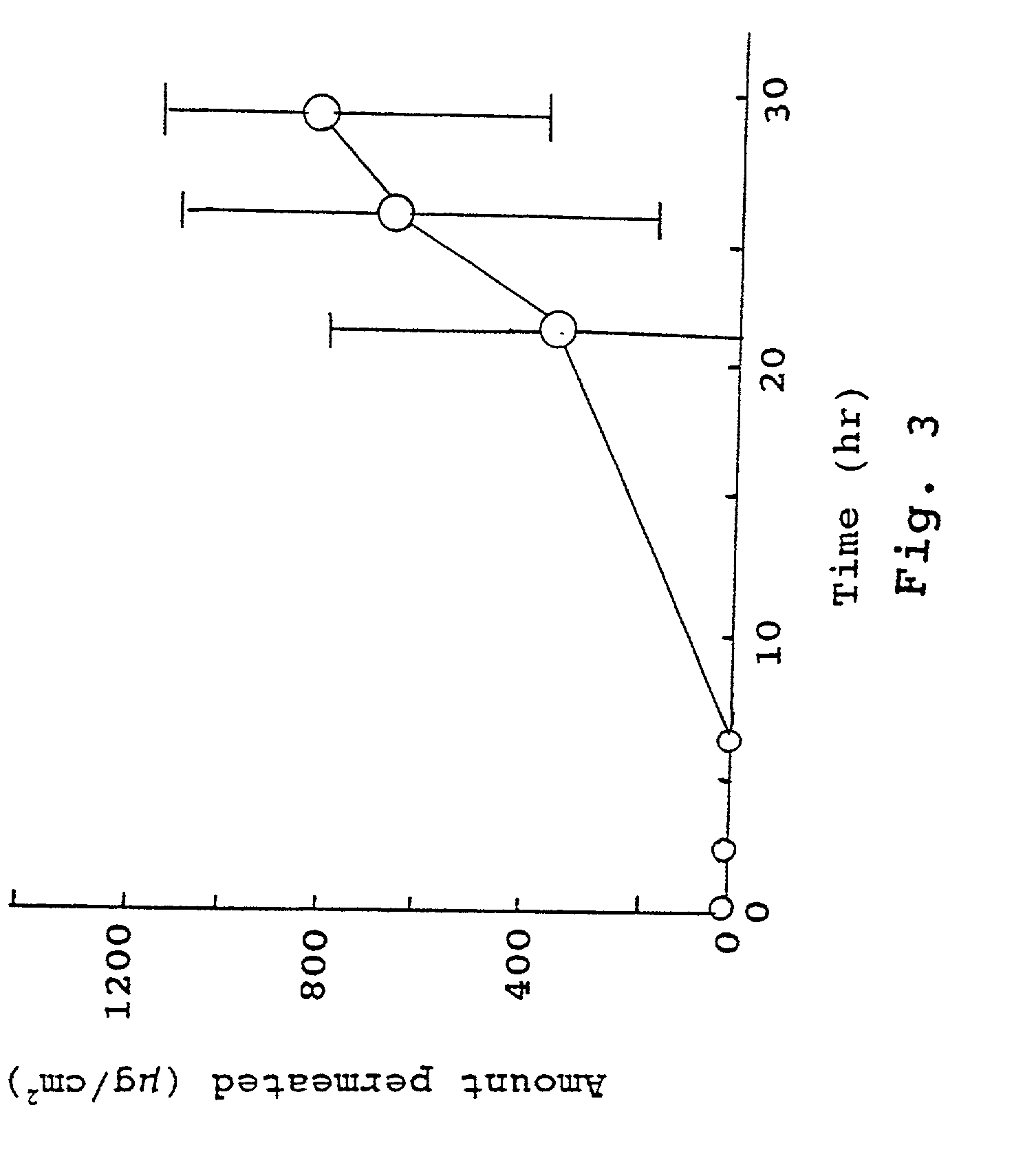Compositions for rapid and non-irritating transdermal delivery of pharmaceutically active agents and methods for formulating such compositions and delivery thereof
a technology of pharmaceutical active agents and compositions, applied in the direction of drug compositions, bandages, plant/algae/fungi/lichens ingredients, etc., can solve the problems of limiting factors, limiting compounds, and the delivery mode has reached its technological limits, so as to facilitate the movement of complexes, minimize reactivity and sensitization characteristics, and facilitate the effect of transmigration through the skin
- Summary
- Abstract
- Description
- Claims
- Application Information
AI Technical Summary
Benefits of technology
Problems solved by technology
Method used
Image
Examples
example 1
[0223] The following composition (lotion) using the above described Stock Delivery System (SDS) is prepared with Diosgenin (25R)-Spirost-5-en-3.bet-a.-ol) as active ingredient; diosgenin is a large (MW=414.6), difficulty soluble soy isoflavone:
9 Compound Function Amount (grams) Diosgenin Active 4.5 95% Ethanol / Sec-butanol Primary Solvent 410 c.c. SDS Primary Delivery 90 c.c. Alpha lipoid (Thioctic) Acid Complexer 0.5 Methyl Sulfonyl Methan Comlex Former 0.5 3,3'-Thiodipropionic Acid Complexer 0.2
[0224] A second lotion incorporating other soy isoflavanone compounds is prepared as follows:
10 Compound Function Amount (grams) Genistein Active 5.0 Daidzein Active 5.0 Biochanin A Active 5.0 Phosphatidyl Serine Complexer 25 c.c. SDS Primary Delivery 500 c.c.
[0225] In the above formula, daidzein is 4',7- dihydroxyisoflavone. Biochanin is the 4'-methyl ether of genistein (5,7-dihydroxy-3-(4-hydroxp-henyl)-4H-1 bensopryran-4-one; 4',5,7-trihydroxyisoflavone.
[0226] These two formulations when ...
example 2
[0227] A hormone replacement therapy formulation, especially useful in the treatment of Benign Prostatic Hyperplasia (BPH) using a lower concentration of soy isoflavanones, than in the formulations of Example 1, again in the form of a lotion, is prepared with the following ingredients:
11 Compound Function Amount (grams) SDS Primary Delivery 500 c.c. Diosgenin Active 2.5 Dehydroepiandosterone Skin Stabilizer / Active 7.5 Pregnenolone acetate Skin Stabilizer / Active 1.25 Dopamine Tonic 0.1 Para-aminobenzoic Acid B Complex Former, 0.5 Skin Stabilizer 2-Diethylaminoethanol Solute Modifier 0.5 Ascorbyle Palmitate Solvent Modifier 0.15
[0228] To enhance the cosmetic tonic properties of the above formulation, various cosmetic additives can be added to the above formula, for example, various plant extracts, such as, for example, extracts of camomile, rosemary, rose hip, horsetail, in amounts of, for example, 10 cc, 5 cc, 5 cc, and 5 cc, respectively.
example 3
[0229] A similar, but milder, formulation to that of example 2, more suitable for a female cosmetic product is formulated as follows:
12 Compound Function Amount (grams) SDS Primary Delivery System 300 Pregnenolone acetate Skin Stabilizer / Active 1.0 Diosgenin Active 0.6 Dehydroepiandosterone Skin Stabilizer / Active 0.6 Forskoli (extract, 40%) 65 mg. 3-Hydroxy Tyramine Tonic 50 mg. (Dopamine) Camomile Extract Tonic 5.0 cc Ascorbyle Palmitate Solvent Modifier 0.3 Para-aminobenzoic acid B Complex Factor, Skin 0.5 Stabilizer 2-Diethylaminoethanol Solute Modifier 0.5 Horsetail Extract Tonic 0.5 3,3'-Thiodiproprionic acid Solute Modifier 0.075 Methyl Sulfonyl Methane Solvent Modifier 0.5
PUM
| Property | Measurement | Unit |
|---|---|---|
| molecular weight | aaaaa | aaaaa |
| molecular weight | aaaaa | aaaaa |
| melting point | aaaaa | aaaaa |
Abstract
Description
Claims
Application Information
 Login to View More
Login to View More - R&D
- Intellectual Property
- Life Sciences
- Materials
- Tech Scout
- Unparalleled Data Quality
- Higher Quality Content
- 60% Fewer Hallucinations
Browse by: Latest US Patents, China's latest patents, Technical Efficacy Thesaurus, Application Domain, Technology Topic, Popular Technical Reports.
© 2025 PatSnap. All rights reserved.Legal|Privacy policy|Modern Slavery Act Transparency Statement|Sitemap|About US| Contact US: help@patsnap.com



